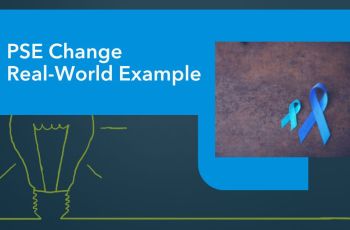This work was supported by Cooperative Agreement #NU58DP007539-01 from the Centers for Disease Control and Prevention (CDC).
Colorectal Cancer
The 2024 Annual National Colorectal Cancer Awareness Month Webcast celebrated national achievements and the latest state of the field updates.
This guidebook and webinar provide information and tools to motivate individuals to discuss screening prior to the recommended screening age.
The authors explored changes in the counts of U.S. incident cases by cancer type, age, sex, race, and disease stage in 2020.
This guide is targeted at coalition members and leaders who are looking to make highly effective campaigns to increase colorectal cancer (CRC) screening rates in their communities, especially for those hardest to reach.
This Blue Star Conversation featured a presentation on a recent study: "Uptake of colorectal cancer screening after mailed fecal immunochemical test (FIT) outreach in a newly eligible 45-49-year-old community health center population."
This manual describes how to implement the New Hampshire Colorectal Cancer Screening Program's (NHCRCSP) Patient Navigation model.
This blog post reviews a trial that provided rural women with an interactive video of tailored messages about cancer screening plus a phone call with a patient navigator to get them up to date on cancer screenings.
Due to high rates of colorectal cancer (CRC) incidence and low screening rates in Kentucky, the Kentucky Cancer Consortium launched a focused initiative to improve CRC screening rates in the state.
In Kentucky, colorectal cancer was the second-leading cause of cancer death; incidence rates were also high. The work of the Kentucky Cancer Consortium over 5 years resulted in the legislatively established Kentucky Colon Cancer Screening Program.
These systematic reviews recommend interventions that engage community health workers to increase screenings for breast, cervical, and colorectal cancer.

